Meet the artists exhibiting at Encounters, Art Basel Hong Kong
Roula Khalaf, Editor of the FT, selects her favourite stories in this weekly newsletter.
The Encounters section at Art Basel Hong Kong, where large-scale sculptures and installations are shown, will reflect “the accelerated sense of absurdity at a time where persistent political revolutions and social uprisings are part of our new normal”, according to Alexie Glass-Kantor, the section’s curator for the fifth year running. “The theme, ‘Still We Rise’, explores thresholds between life and death, between collapse and resurrection.”
Over half the participants are from the region, she says. “Most of these artists are also not household names.” This year’s presentation includes eight site-specific projects and four existing installations (all the works are for sale).
Joël Andrianomearisoa
The Malagasy artist is showing his sculptural installation “The Cartographies of Desire, the space between us” (2019). Andrianomearisoa will represent Madagascar at the 58th Venice Biennale this summer, when the African country will present its first ever pavilion (Sabrina Amrani gallery).
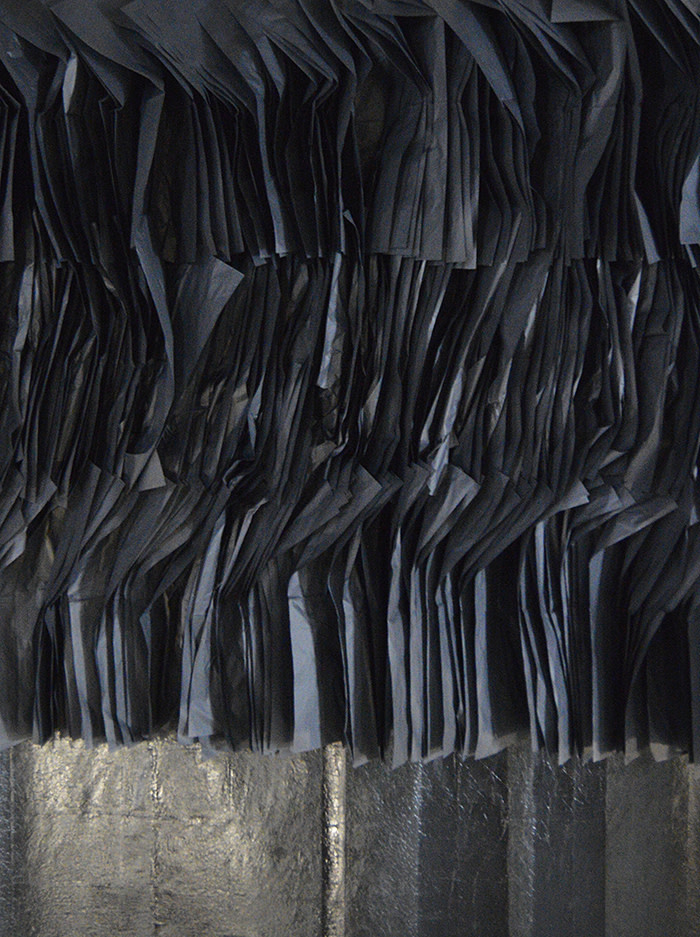
Describe how the work is structured
The work consists of four lines of wood beams at different heights, from where 21 linen sheets with silk paper elements hang. One of the beams holds seven fluorescent lamps, which mark the acts into which the work is divided.
Is it a painting, a sculpture or an architectural assemblage?
It is neither a painting, a sculpture nor an architectural assemblage, although it has something of each. The work is an installation that has different elements that refer to architecture, painting and sculpture, but also to love, desire, loss, despair and hope.
Do you think visitors to the art fair will focus on the work for as long as you would like them to?
I hope so. I think that, despite the context of a fair, where art is viewed and consumed at a very fast pace, the Encounters sector [encourages] visitors to focus on the works for an appropriate amount of time. The installation is very haptic but inaccessible at the same time: an inviting labyrinth that you cannot enter.
Mit Jai Inn
The audience is invited to walk on and through the work “Planes (Electric)” (2019), by the Thai artist. The piece combines large-scale, thickly layered, vibrant paintings draped across the floor, and a series of large scrolls (Silverlens and TKG+ gallery).
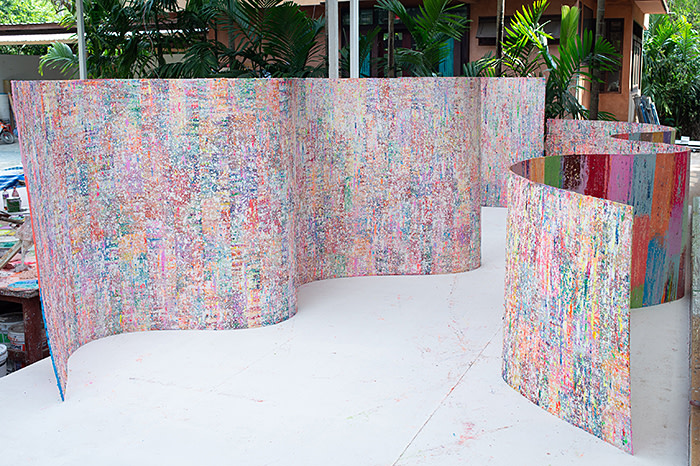
Is the visitor meant to immerse him/herself in the work?
The work for Encounters includes eight paintings — a spiritual number. [It represents] different ways of being, hanging from high above, holding power like a monument, or hanging lower, unfurling across the ground, rolling out a space for us. There are times we are floating. In the womb we float. For me, painting should act that way: be above, around and underneath you. It should act like a spirit, floating in between.
Will the work mimic urban life in some way?
“Planes (Electric)” is something like a camp, a refuge, a walled but open enclosure of vibrations. We are in relation to everything around us. Electricity can refer to these relational vibrations, to the spirit of a city such as Hong Kong, its light and its movement.
Is this your most ambitious work yet?
I never have ambition. I try to be a good human every day.
Lee Bul
The Korean artist presents a new version of her replica Zeppelin “Willing To Be Vulnerable — Metalized Balloon” (2019), seen last year at the Hayward Gallery in London. “This piece is 12 metres long, and will be suspended over the heads of fair-goers. I like its robust physicality,” Glass-Kantor says. “Lee Bul grew up under the dictatorship of Park Chung-hee, and there is a precarious balance between beauty and menace in her work.” (Galerie Thaddaeus Ropac, Lehmann Maupin and PKM Gallery)
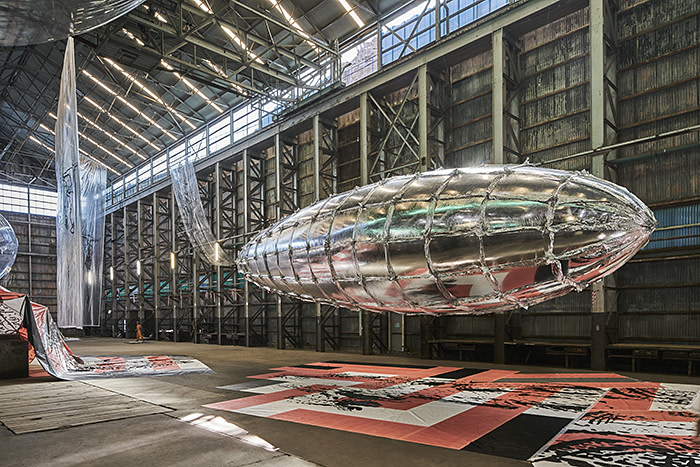
Is the work intended to highlight the ways in which technology can fail humanity?
All technology entails [the] human desire for realising the ideal. In my view, the process of its failure is humanity itself.
Will it be strange seeing it in a different context?
This work was originally presented at the 20th Sydney Biennale in 2016 under the theme of “The future is already here — it’s just not evenly distributed”. Now, at Art Basel Hong Kong, I am trying to show this work in a new context.
Would you rather the work ends up in a private collection or a museum?
It doesn’t really matter if the work is acquired by a private collection or a museum. Rather, it is more important that the work is situated where it can create its own context consistently.
Pinaree Sanpitak
Bangkok-born Sanpitak is showing “The Walls” (2019), an intricate and delicate maze-like work made from sheets of handmade paper (STPI — Creative Workshop and Gallery, Singapore).
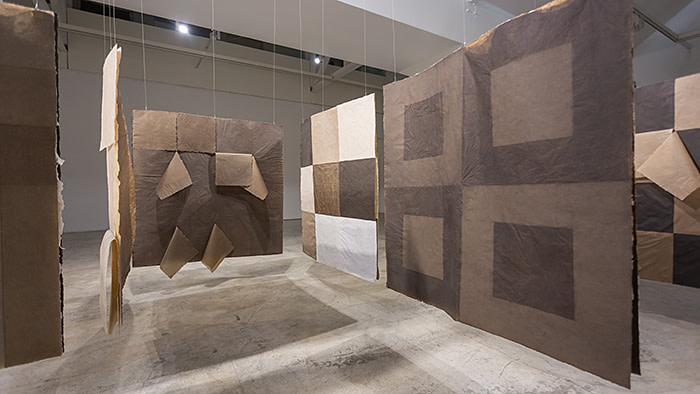
How did this work develop?
“The Walls” has evolved from large-scale installations dating from the past two years: “The Roof” (2017), “The Mats and The Pillows” (2017-18) and “The House is Crumbling” (2017-18). “The Walls” is beyond a particular individual. It is about all of us, despite differences in gender or race.
Is this work meant to disorient visitors?
“The Walls” can be installed in various configurations depending on the site. This first set-up is both open and closed and can be viewed in 360 degrees. It is structured yet organic and fragile, a condition not unlike what surrounds us, which we have to navigate each day.
What are you working on next?
I am working on painting and collage works for Yavuz Gallery in Singapore, and also on two community-based projects with the people of Honjima for this year’s Setouchi Triennale and the Hancock Shaker Village in the US in 2021. I’m also compiling an inventory of my works for a monograph that will be published next year.
Zhao Zhao
A former assistant to Ai Weiwei, Zhao Zhao created “In Extremis” (2018) after noticing traces of a cat’s body flattened into the asphalt outside his studio by passing vehicles (Tang Contemporary).
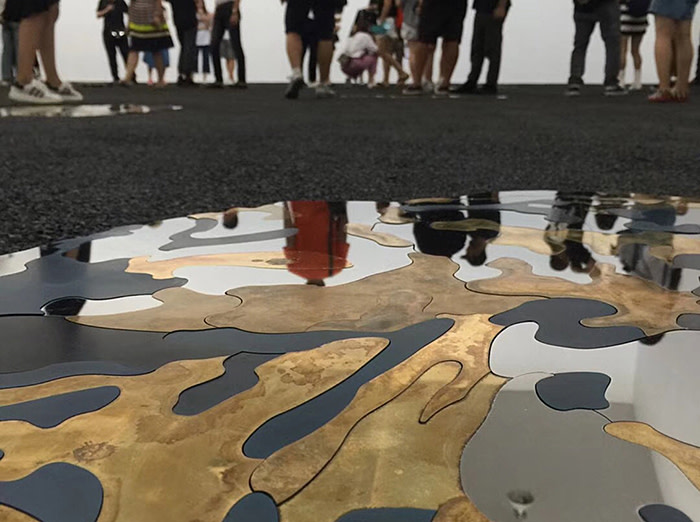
Will fairgoers be able to walk on the work, stamping on the images of the dead cats?
This will be an interactive installation, and visitors will be invited to walk on the asphalt area, though we need to protect the brass and metal parts, and will have staff guarding the work.
Is the work about mortality and the sanctity of life?
“In Extremis” literally means “at the point of death”. The life experience at this moment is very abstract. It is difficult to imagine this state without experiencing it in person. At this time, all lives, whether human or animal, are equal. They will all face this ultimate personal experience.
Is it a comment on Chinese society?
In every period of human society, construction and warfare nurtured and buried individual vitality and chances of survival. All this praise for modern revolution implies the “winning” of human civilisation as a whole. These public and collective wins, countless individual choices and encounters, hurts and sacrifices, and ultimate memories, have become collateral conditions within collective discourse. The dead animal became the subordinate symbol.
Do you consider yourself a conceptual artist or a political artist?
I would rather not label myself or define my own style.
Follow @FTLifeArts on Twitter to find out about our latest stories first. Subscribe to FT Life on YouTube for the latest FT Weekend videos
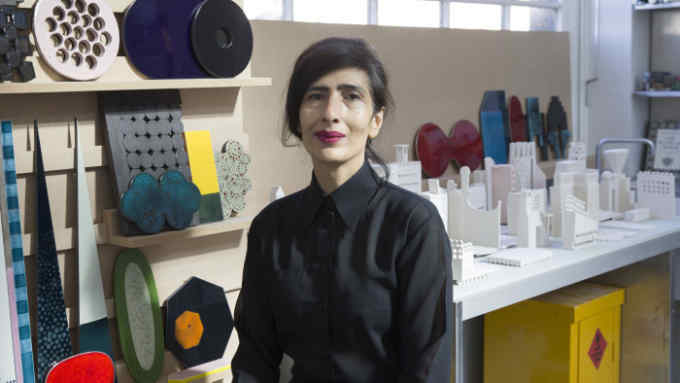
Comments